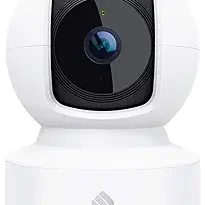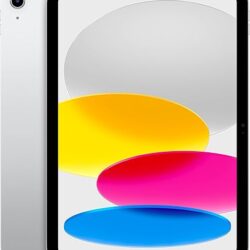四、使用代词时需要注意的几个问题 Points that merit special attention
(一)代词的复数形式 The plural forms of pronouns
1.人称代词“我们、你们、他们、她们”都是复数形式,是 由表示单数的人称代词“我、你、他、她”后边加词尾“们”构 成的。因此,使用人称代词时要分别使用单、复数形式。例如:
The personal pronouns 我们,你们,他们 and 她们 are all plural in form. They are formed by adding the suffix f] to the singular forms of pronouns , , t, and E. So pronouns should be used either in the singular or in the plural according to circumstances. For example:
我是英国人。
他们是中国人。
人称代词做主语、宾语时,无论是单数还是复数,形式都不变。例如:
The form of a personal pronoun, whether in the singular or plural, remains unchanged when it is used as an object. For example:
她看我们。
我们找她。
2.“您”表示尊敬,口语中不用复数形式。
Generally, the pronoun , a respectful form of address, is not used in the plural.
3.“它”是指人以外的事物的,“它”和词尾“们”也可以构成复数形式“它们”,“它”、“它们”在读音上是和“他”、“他们”一样的,所以只用于书面语。
它 refers to things rather than human beings. With the suffix 们, it becomes the plural form 它们 which, however, appears only in written Chinese, because 它 and 他, or 它们 and 他们 are the same in pronunciation.
4.“大家”表示复数,而“自己”、“别人”和“人家”表示单数或复数都可以,要根据语言环境确定。例如:
大家 indicates plural while 自己, 别人 and 人家 may express either singular or plural. The number shown by 自己 or 别人 depends on the context. For example:
他自己知道。(单数)( singular)
我们要靠自己。(复数)(plural)
5.指示代词“这、那”和疑问代词“哪”后边可以加“些”表示复数。例如:
The demonstrative pronouns 这, 那and the interrogative pronoun 哪can indicate the plural with 些 added to them. For example:
这些是他的书。(做主语)( as a subject)
那些东西不好。(做定语)( as an attributive modifier)
哪些画儿好看?(做定语)( as an attributive modifier)
(二)人称代词的性别
The gender of personal pronouns
在书面语里,“他”指男性,“她、她们”指女性,但在口语里由于读音一样,没有这种区别。
In written Chinese 他 refers to a male person and 她 or 她们 female, but the difference is lost when spoken because of their same pronunciation.
“他们”一般指男性,也可以包括女性。例如:
他们 generally refers to the male but may also include the female. For example:
他们(姐姐和弟弟)回来了。
王老师教他们(男同学和女同学)。
(三)代词和句子成分
pronouns and sentence elements
- 三类代词都能做主语、宾语和定语。
The three kinds of pronouns can all serve as subject, object or attributive modifier.
2.有的指示代词和疑问代词还能做状语:但“谁”和“什么”不能做状语。例如:
Some demonstrative pronouns and interrogative pronouns can also serve as adverbial adjuncts. But “谁” and “什么” cannot serve as adverbial. For example:
她的姓不应该这么念。
你的名字怎样写? x你的名字什么写?
这句话怎么解释? x这句话什么解释?
3.只有疑问代词“怎么样”能做谓语和程度补语。例如:
Of all pronouns the interrogative pronoun 怎么样 is the only one that can be used as the predicate or as a complement of degree of a sentence. For example:
这个话剧怎么样? (做谓语) ( as a predicate)
演员们跳得怎么样? (做补语) ( as a complement)
(四)代词做定语和结构助词“的(de)”
A pronoun used as an attributive modifier and the structural particle的(de)
1.人称代词和指人的疑问代词“谁”做定语,而中心语是表示亲属关系或集体单位的名词时,后边一般不用助词“的”。例如:
Usually is not used after a personal pronoun or E, an interrogative pronoun referring to person, used attributively modifying a noun of kinship or institution. For example:
我妈妈是医生。
我校有两千多学生。
谁弟弟病了?
我系是计算机系。
而表示领属关系时要用“的”。例如:
However, when they express possession, 的 is obligatory. For example:
他们的衣服在柜子里。
这是谁的练习本?
 亚马逊导购/好书推荐
亚马逊导购/好书推荐  读新闻学外语
读新闻学外语  卑诗省当天新盘
卑诗省当天新盘
- 指示代词“这、那”和疑问代词“哪”用在数词或量词前做定语时,一律不用“的”。例如:
When the demonstrative pronouns X, ß and the interrogative pronoun serve as attributive modifiers of numerals or measure words, is not used at all. For example:
这三支钢笔很好用。
那张床太小。
哪座楼是办公楼?
其他指示代词做定语时,一般要用“的”。例如:
When other demonstrative pronouns are used as attributive modifiers, i is usually required. For example:
这儿的风景真好!
我不买那样的绸缎。
3.疑问代词“什么”、“多少”,总是直接用在名词前边做定语,不用“的”。例如:
The interrogative pronouns #4 and , when used as attributive modifiers, always go directly in front of noun. For example:
这是什么地方?
多少人参加晚会?
(五)疑问代词“多少”和“几”
The interrogative pronouns 多少and 几 - “多少”代表的数目可大可小;“几”常代表1~9的数字。例如:
The number expressed by 多少 may be great or small; 几 often indicates numbers from 1 to 9. For example:
这个大学有多少(个)学生?
那个城市有多少(个)人?
你有多少(本)中文书?
你家有几口人?
他买几双鞋?
这儿有十几本中文书?
2.“多少”和名词可以直接联系,中间可不用量词;“几”和名词之间一定要用量词。例如:
There must be a measure word between JL and a noun while can be directly linked to a noun. For example:
你们班有多少(个)同学?
你有多少(本)中文书?
你上午有几节课?
你们要几双筷子?
你学几种语言?
她买了几条鱼?
x你有儿本子?
x你住儿房间?
x你买儿葡萄?
x他有几词典?
(六)指示代词“每”
The demonstrative pronoun
1.“每”指全体中的任何一个。“每”一般用在量词或带量词性质的名词前做定语,后面常用副词“都”,表示“全部是这样”。例如:
refers to any one of the whole, generally placed as an attributive modifier before a measure word or a noun with the quality of a measure word. It is often accompanied by #$, meaning ““all”. For example:
他每天都来这儿。
我每年都去上海。
每个菜都很好吃。
每种词典都很贵。
2.“每”和“常”不能同时出现在一个句子里。例如:
她每天都跑步。x她每天都常跑步。
她常跑步。
我每星期都去看望父母。x我每星期都常去看望父母。
我常去看望父母。
(七)人称代词“我们”和“咱们”
The personal pronouns 我们 and 咱们
1.“我们”指包括说话人在内的若干人,一般不包括对方(听话的人)。例如:
我们generally stands for a number of people including the speaker except the other party ( the people spoken to). For example:
我们都是教师。
我们还有事(你可以先走)。
2.“咱们”包括说话人(“我”或“我们”)和对方(“你”或“你们”)。例如:
咱们 includes both the speaker ( 我or 我们) and the other party (你 or 你们),For example:
咱们都是一个单位的。
(您快来,)咱们一起商量。
咱们确定一下旅行的路线。
(八)疑问代词有时不表示疑问。
Sometimes interrogative pronouns do not anticipate questions.
1.表示任指。用疑问代词代替“任何”人或事物,表示强调“全部是这样”,没有例外。句中用副词“都”或“也”。“也”多用于否定句。例如:
It can refer to anything. You can replace anyone or anything with interrogative pronouns to emphasize “all” without exception, often accompanied by adverbial or 1. tE is often used in negative sentences.
我们班,谁都喜欢吴老师。
什么问题都是可以解决的。
这个城市,哪条街都很干净。
哪儿都有这种树。
谁也没去。
早上她什么也没吃。
- 表示虚指。用疑问代词表示不确定的人或事物。例如:
It can refer to something or someone in general, things or persons you are not so sure of. For example:
我饿了,想吃点什么。(想吃点东西)
你随便找谁一起去吧。(只要找到人就行)








